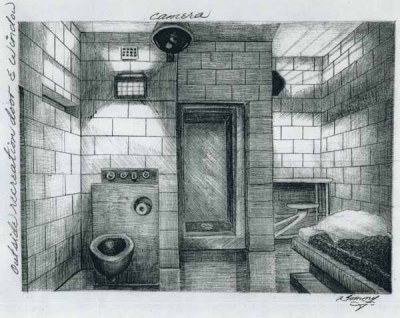This is a companion resource to my Ethics Corner column in the March 2011 issue of California Psychologist magazine. It provides background resources on ethical conundrums in prison and jail settings. The column itself, “Ethics and Captive Populations,” is available HERE.
Those who so glibly construct hurtful and defeating labels – “psychopath,” “sociopath,” “criminal personality,” all diagnoses which ensure neglect, hostility, mishandling and brutality – might first thoroughly know and respect another’s life history. It takes unusual arrogance to dismiss a fellow human being’s lost journey as irrelevant.
— J. G. Miller
Online resources:
- Dolan, J. (2010, Dec. 28), “Objections raised to caging inmates during therapy,” Los Angeles Times
- My blog comment: “Prison therapy: It’s all in the name“
- Piller, C. (2010, May 9), “Guards accused of cruelty, racism,” Sacramento Bee
- My blog summary of this superb series on California prisons: “
- Abuse rampant in California prisons”
 Books and journal articles:
Books and journal articles:
- Bandura, A. (1990). Mechanisms of moral disengagement. In: Origins of Terrorism: Psychologies, Ideologies, Theologies, States of Mind
- Bazelon, D. (1972), “Psychologists in corrections: Are they doing good for the offender or well for themselves?” In Brodsky, S.L., Psychologists in the Criminal Justice System. Urbana, IL: University of Illinois Press
- Brodsky, S.L. (1980). Ethical issues for psychologists in corrections. In Monahan, J., (Ed.), Who is the Client? The Ethics of Psychological Intervention in the Criminal Justice System. Washington, DC: American Psychological Association
- Dvoskin, J. A., Spiers, E. M., & Brodsky, S. L. (2007). Correctional psychology: Law, ethics, and practice. In: Goldstein, A. M. (Editor), Forensic Psychology: Emerging Topics and Expanding Roles, Hoboken, NJ: John Wiley & Sons (605-632)
- Grassian, S. (1983). Psychopathological effects of solitary confinement. American Journal of Psychiatry 140 (11), 1450-1454
-
Also see related resource page: “Segregation Psychosis“
-
Blog post “Supermax: Hell on earth or not as bad as we thought?”
-
- Haney, C. (2005) Reforming Punishment: Psychological Limitations to the Pains of Imprisonment (Law and Public Policy: Psychology and the Social Sciences). American Psychological Association
 Kupers, T. (1999). Prison Madness: The Mental Health Crisis Behind Bars and What We Must Do About It. Jossey-Bass
Kupers, T. (1999). Prison Madness: The Mental Health Crisis Behind Bars and What We Must Do About It. Jossey-Bass- Levinson, R. (1985). The psychologist as change agent in corrections. In: Ewing, C. P. Psychology, Psychiatry, and the Law: A Clinical and Forensic Handbook. Sarasota, FL: Professional Resource Exchange, pp. 129-144
- Miller, J. G. 1991. Last One Over the Wall: The Massachusetts Experiment in Closing Reform Schools. Ohio State University Press
- Rhodes, L. (2000). Taxonomic anxieties: Axis I and Axis II in prison. Medical Anthropology Quarterly, 14, 346-373
- Rhodes, L. (2007). Supermax as a Technology of Punishment. Social Research, 74, 547-566
- Smith, C. (1986). Prison psychiatry and professional responsibility, Journal of Forensic Sciences 32 (3), 717-724
- Toch, H. (1992), Living in Prison: The Ecology of Survival. Washington, DC: American Psychological Association
- Toch, H. (1997), Corrections: A Humanistic Approach. Harrow and Heston
- Weinberger, L. E. & Sreenivasan, S. (1994). Ethical and professional conflicts in correctional psychology. Professional Psychology: Research and Practice 25 (2), 161-167
- Weinstein, H. C. (1989). Psychiatric services in jails and prisons: Who cares? American Journal of Psychiatry 146 (9), 1094-1095


